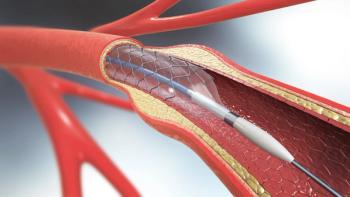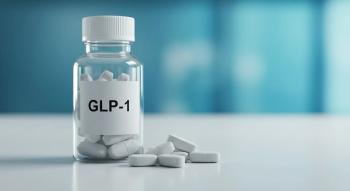
GLP-1 Analogs: An Emerging Drug Therapy for Glycemic Control
Dr. Havrilla is a critical care specialty resident at University of Pittsburgh Medical Center. Dr. Drab is an assistantprofessor of Pharmacy & Therapeutics at University of Pittsburgh School of Pharmacy and director of theUniversity Diabetes Care Associates.
In the United States, the incidence ofdiabetes is reaching epidemic proportions.According to the Centersfor Disease Control and Prevention,23.6 million people or 7.8% of the USpopulation, have diabetes. In addition,25.9% of adults are estimated to haveprediabetes, based on fasting bloodglucose test results. The combinedincidence of diabetes and prediabetessuggests that approximately 34% ofthe US population is currently at riskfor diabetes-related medical complications.1
The development of diabetes inAmerica's youth seems to be onthe rise. Results from the 2005-2006National Health and Nutrition ExaminationSurvey indicate that 16%to 17% of children and adolescentsaged 2 to 19 have a body mass indexgreater than or equal to the 95th percentileof their age and sex-specificgroup, which is almost double thenumber of children in this category 2decades ago.1,2 Worldwide, the rise intype 2 diabetes is occurring in parallelwith the increasing prevalence ofobesity in children.3,4
Diabetes Risk Factors and Complications
Risk factors for developing diabetesinclude a family history of diabetes,ethnicity (risk is increased for Asians,Hispanics, and African Americans),obesity, central fat distribution, andinactivity.5 Obesity may be one of themost important of these risk factors,as it induces resistance to insulinmediatedperipheral glucose uptake,an important component of type 2 diabetes.The reversal of obesity decreasesthe risk of type 2 diabetes and canimprove glycemic control in patientswith established disease.5
Complications of diabetes includecoronary heart disease (CHD), whichis a major cause of morbidity andmortality for this patient population.Patients with diabetes possess morecardiovascular risk factors, such ashypertension, obesity, lipid abnormalities,and elevated plasma fibrinogenthan do individuals without diabetes.6The National Cholesterol EducationProgram report considers type 2 diabetesto be a CHD equivalent. Thisbrings diabetes to the highest riskcategory for CHD.7
What Is GLP-1?
Glucose homeostasis is a complicatedprocess that involves insulin, as wellas amylin, glucagon, glucagon-likepeptide-1 (GLP-1), and glucose-dependentinsulinotropic polypeptide (GIP).GLP-1 is a peptide secreted by L cellsin the intestines with the ingestion offood. It increases glucose-dependentinsulin secretion from beta cells inthe pancreas, decreases glucagonsecretion in the liver, inhibits gastricemptying, decreases food intake byincreasing satiety, and improves betacell function.8,9 Postprandial GLP-1concentrations and the insulin secretoryresponse to GIP are reduced inpatients with type 2 diabetes and inpatients with impaired glucose tolerance.10,11
Knowledge of the role of GLP-1and GIP in normal glucose homeostasishas led to the developmentof new therapeutic agents, such asthe GLP-1 analogs. This medicationclass affects glucose control throughseveral mechanisms that are similarto the naturally produced hormoneGLP-1. One of the newest medicationswithin this class, the experimentaldrug liraglutide, not only improvesglycemic control but may also haveadvantages over current therapies.For example, liraglutide acts in aglucose-dependent manner, stimulatinginsulin secretion only when glucoselevels are higher than normal.Furthermore, the risk for hypoglycemiawith liraglutide is low, and thepotential for beta cell regenerationhas been shown in animal models.12
Liraglutide can be administeredonce daily by subcutaneous injectionat interchangeable sites, includingthe abdomen, upper arm, andthigh, without a clinically significantchange in absorption.13 The half-lifeof liraglutide when administered subcutaneouslyis 13 hours, as comparedwith a half-life of less than 2 minutesfor endogenously produced GLP-1.It is postulated that self-associationof the drug, due to a fatty acid sidechain (palmitoyl), delays absorptionof liraglutide and prolongs itsaction.14 The metabolism of liraglutidewas found to be similarto that of large peptides, withno single organ being responsibleas the major route ofelimination.15
Liraglutide: A Review of the Findings
Weight loss in obese patientswith type 2 diabetes reduces allrisk factors for CHD.16 Severaltrials have evaluated the effectof liraglutide on weight. In onestudy, researchers reportedthat liraglutide decreases postprandialhunger ratings andenergy intake in patients.17 ThisGLP-1 analog was also shownto reduce fat percentage, centraladipose tissue, and hepaticsteatosis when added to metformin,as compared withglimepiride plus metformin.18When added to the sulfonylureaglimepiride, liraglutide improvedglycemic control by reducing theA1C, producing a greater decrease inbody weight than rosiglitazone plusglimepiride. Both results were statisticallysignificant.19
Studies also compared liraglutideto glimepiride, with both being addontherapy to metformin. One studydiscovered that liraglutide significantlyreduced the perceived frequencyof hyperglycemia, hypoglycemia,and public distress due to weight,and the other study concluded thatliraglutide plus metformin resultedin a comparable reduction of A1Cwith less hypoglycemic episodes andgreater weight loss in the liraglutidegroup.20,21
When liraglutide was comparedwith glimepiride as monotherapy fordiabetes, liraglutide significantly loweredA1C and resulted in weight lossand fewer episodes of hypoglycemiaas compared with patients in theglimepiride arm.22 When comparedwith insulin glargine as add-on therapyto metformin and a sulfonylurea,the liraglutide group statisticallyimproved glycemic control andreduced body weight as comparedwith the glargine treatment group.23
Liraglutide has also been shown to improve not only fasting blood glucose levels but also both the absolute and incremental postprandial glucose levels. This impact is postulated to be mediated through a combination of increased insulin secretion coupled with delayed gastric emptying.24 Overall, the effects of liraglutide therapy on weight loss and glycemic control demonstrated in these trials could assist in the weight loss efforts of patients, decrease central adiposity, reduce the number of hypoglycemic episodes, and improve glycemic control.
The reduction of CHD risk factors,as well as effective, safe, and welltoleratedtherapy, is the cornerstoneto improving morbidity and mortalityin the diabetic population. High bloodpressure is prevalent in the diabeticpopulation and is an additional riskfactor for CHD. Liraglutide wasfound to improve the cardiovascularrisk profile by reducingthe mean systolic blood pressurein patients.25
If it is approved by the FDA,liraglutide will be made availablein a prefilled disposableinjectiondevice. This mode ofadministration has been shownto be a major asset for improvingcompliance among patientswith diabetes. These devicesare considered convenient andeasy to use, and they providethe patient with additionalfreedom, which could increasecompliance and therefore reducediabetes-related complications.26
The Pharmacist Can Help
The pharmacist can play amajor role in aiding complianceand patient understanding.Counseling sessions canimpart better understanding of themedication and its importance. Inaddition, instruction in the correctinjection technique, whether with asyringe and vial or prefilled injectiondevice, is important to ensure appropriatemedication use. Not only can apharmacist increase compliance andprovide valuable information to ourpatients, but we can keep patientsabreast of new developments in thetreatment of diabetes.
References
- CDC. National diabetes fact sheet: general information and national estimates on diabetes in the United States. 2007. www.cdc.gov/diabetes/pubs/pdf/ndfs_2007.pdf Accessed August 13, 2008.
- Ogden CL, Carroll MD, Flegal KM: High body mass index for age among US children and adolescents, 2003-2006. JAMA 2008; 299(20): 2401-5.
- American Diabetes Association: Standards of medical care in diabetes--2008. Diabetes Care 2008; 31 Suppl 1: S12-54.
- Pinhas-Hamiel, O, Zeitler, P. The global spread of type 2 diabetes mellitus in children and adolescents. J Pediatr. 2005; 146:693.
- National Diabetes Information Clearinghouse (NDIC).2008. diabetes.niddk.nih.gov/dm/pubs/riskfortype2/index.htm. Accessed August 13 2008.
- Taegtmeyer, H, McNulty, P, Young, ME. Adaptation and maladaptation of the heart in diabetes: Part I: general concepts. Circulation 2002; 105:1727.
- Third report of the National Cholesterol Education Program (NCEP) Expert Panel on detection, evaluation, and treatment of high blood cholesterol in adults (Adult Treatment Panel III): Final report. US Department of Health and Human Services; Public Health Service; National Institutes of Health; National Heart, Lung, and Blood Institute. Circulation 2002; 106:3143.
- Egan, JM, Clocquet, AR, Elahi, D. The insulinotropic effect of acute exendin-4 administered to humans: comparison of nondiabetic state to type 2 diabetes. J Clin Endocrinol Metab. 2002; 87:1282.
- Matthews D, Marre M, Le-Thi TD, et al. Liraglutide, a once-daily human GLP-1 analog, significantly improves ?-cell function in subjects with type 2 diabetes. Diabetes. 2008;57(Suppl 1)A150-1, 505-P.
- Toft-Nielsen MB, Madsbad S, Holst JJ. Determinants of the effectiveness of glucagon-like peptide-1 in type 2 diabetes. J Clin Endocrinol Metab. 2001; 86:3717-3723.
- Nauck MA, Heimesaat MM, Orskov C, et al. Preserved incretin activity of glucagon-like peptide 1 [7-36 amide] but not of synthetic human gastric inhibitory polypeptide in patients with type-2 diabetes mellitus. J Clin Invest. 1993; 91(1):301-7.
- Buteau J, El-Assaad W, Rhodes CJ, et al. Glucagon-like peptide-1 prevents beta cell glucolipotoxicity. Diabetologia. 2004;47(5):806-15.
- Kapitza C, Flint A, Spitzer H, et al. The effect of three differenct injection sites on the pharmacokinetics of the one-daily human GLP-1 analogue liaglutide. Diabetes. 2008; 57(Suppl 1):A593, 2146-PO.
- Steensgaard DB, Thomsen JK, Olsen HB, et al. The molecular basis for the de9Suppl 1layed absorption of once dialy human GLP-1 analoge, liraglutide. Diabetes. 2008; 57(Suppl 1):A164.
- Hellenberg H, Malm-Erkefalt M, Bjornsdottir I, et al. Metabolism and excretion of [PaI-3H]-liraglutide in human healthy subjects. Diabetes. 2008;57(Suppl 1):A581-2,2107-P.
- Buse JB, Ginsberg HN, Bakris GL, et al. Primary prevention of cardiovascular diseases in people with diabetes mellitus. A scientific statement from the American Heart Association and the American Diabetes Association. Diabetes Care. 2007;30(1):162-172.
- Flint A, Kapitza C, Hindsberger C, et al. The once-daily human GLP-1 analogue liraglutide decreases postprandial Hunger and energy intake. Diabetes. 2008;57(Suppl 1):A165, 555-P.
- Jendle J, Nauck MA, Matthews D, et al. Liraglutide, a once-daily human GLP-1 analog, reduces fat percentage, visceral and subcutaneous adipose tissue and hepatic stenosis compared with glimepiride when added to metformin in subjects with type 2 diabetes. Diabetes. 2008;(Suppl 1):A32, 106-OR.
- Marre Michel, Shaw J, Brandle m, et al. Liraglutide, a once-daily human GLP-1 analog, added to a sulfonylurea (SU) offers significantly better glycemic control and favorable weight change compared with rosiglitazone and SU combination therapy. Diabetes. 2008;57(Suppl 1):A4,13-OR.
- Frid A, Nauck MA, Hermansen K, et al. Evaluation of patient reported outcomes in subjects with type 2 diabetes treated with the once-daily human GLP-1 analog liraglutide or glimepiride, both as add on to metformin. Diabetes. 2008;57(Suppl 1):A574.
- Nauck MA, Frid A, Hermansen K, et al. Liraglutide, a once-daily human GLP-1 analog, in type 2 diabetes provides similar glycemic control with reduced body weight compared with glimepiride when added to metformin. Diabetes. 2008;57(Suppl 1):A150,504-P.
- Garber A, Henry R, Ratner R, et al. Significantly better glycemic control and weight reduction with liraglutide, a once daily GLP-1 analog, compared with glimepiride: All as monotherapy in type 2 diabetes. American Diabetes Association. scientificsessionsdiabetes.org/index.cfm~. Accessed August 17, 2008.
- Russell-Jones D, Vaag A, Schmitz O, et al. Significantly better glycemic control and weight reduction with liraglutide, a once-daily human GLP-1 analog, compared with insulin glargine:All as add-on to metformin and a sulfonylurea in type 2 diabetes. Diabetes. 2008;57(Suppl 1):A159-60,536-P.
- Flint A, Kapitza C, Hindsberger C, et al. The once-daily human GLP-1 analogue liraglutide improves both absolute and baseline corrected postprandial glucose levels. Diabetes. 2008;57(Suppl 1): A165, abs556-P.
- Colagiuri S, Frid A, Zdravkovic M, et al. The once-daily human GLP-1 analog liraglutide reduces systolic blood pressure in patients with type 2 diabetes. Diabetes. 2008;57(Suppl 1):A164-5, abs 554-P.
- Bohannon NJ. Insulin delivery using pen devices. Simple-to-use tools may help young and old alike. Postgraduate Medicine. 1999;106(5):57-8,57-8, 61-4, 68.
Newsletter
Stay informed on drug updates, treatment guidelines, and pharmacy practice trends—subscribe to Pharmacy Times for weekly clinical insights.






































































































































































































